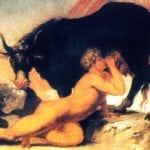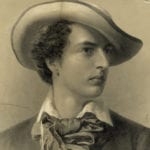 Creepy
Creepy  Creepy
Creepy  Technology
Technology 10 Scientific Breakthroughs of 2025 That’ll Change Everything
 Our World
Our World 10 Ways Icelandic Culture Makes Other Countries Look Boring
 Misconceptions
Misconceptions 10 Common Misconceptions About the Victorian Era
 Mysteries
Mysteries 10 Strange Unexplained Mysteries of 2025
 Miscellaneous
Miscellaneous 10 of History’s Most Bell-Ringing Finishing Moves
 History
History 10 Great Escapes That Ended Right Back in Captivity
 Weird Stuff
Weird Stuff 10 Fascinating Things You Might Not Know About Spiders
 Food
Food 10 Everyday Foods You Didn’t Know Were Invented by the U.S. Military
 History
History 10 Odd Things Colonial Americans Kept at Home
 Creepy
Creepy 10 More Representations of Death from Myth, Legend, and Folktale
 Technology
Technology 10 Scientific Breakthroughs of 2025 That’ll Change Everything
 Our World
Our World 10 Ways Icelandic Culture Makes Other Countries Look Boring
Who's Behind Listverse?

Jamie Frater
Head Editor
Jamie founded Listverse due to an insatiable desire to share fascinating, obscure, and bizarre facts. He has been a guest speaker on numerous national radio and television stations and is a five time published author.
More About Us Misconceptions
Misconceptions 10 Common Misconceptions About the Victorian Era
 Mysteries
Mysteries 10 Strange Unexplained Mysteries of 2025
 Miscellaneous
Miscellaneous 10 of History’s Most Bell-Ringing Finishing Moves
 History
History 10 Great Escapes That Ended Right Back in Captivity
 Weird Stuff
Weird Stuff 10 Fascinating Things You Might Not Know About Spiders
 Food
Food 10 Everyday Foods You Didn’t Know Were Invented by the U.S. Military
 History
History 10 Odd Things Colonial Americans Kept at Home
10 Wacky Satirical Political Candidates
Who doesn’t love a good election? Queuing for hours in the freezing cold, hesitating over who to vote for, and then changing your mind at the last minute. And then once the result is announced, realizing that the annoying bloke who’s going to steal your pension got in anyway. Sometimes it would just be easier if we could vote for, well, one of the following brilliantly bizarre candidates.
10Screaming Lord Sutch
If you grew up in Britain in the ’60s, ’70s, or ’80s, chances are you’ve heard of the Monster Raving Looney Party. Known for their unusual dress code—think cabaret singer who’s fallen into a wardrobe and then had to dash out suddenly—and oddball manifesto, each and every election the Loons would put forward a raft of candidates. At the helm of the good ship Looney was Screaming Lord Sutch. A singer by trade, David Edward Sutch’s rock’n’roll years saw him perform alongside many musical greats. Sutch’s showmanship on stage marked out Sutch and The Savages as a band to see live—he’d pop up out of a coffin and dance around brandishing a burning biscuit, for example—but they never enjoyed any chart success, despite numerous attempts with singles like “Jack the Ripper” and “All Black and Hairy.” Maybe it was this lack of appreciation which drove Sutch into politics.
He first stood in 1964, for the National Teenage Party in the Stratford-Upon-Avon by-election. It would be the first of many losses, even after he switched allegiance to the Monster Raving Loony Party. Perhaps it was the Loonies’ manifesto which hurt their chances. They promised to turn the whole country into a fun park and to make each ex-politician a waiter so that people could throw bread rolls at them. They also advocated dwarf tossing. Although Sutch never made it as an MP, his innovative, cheeky slogans earned him plaudits and thousands of votes and he became a much loved figure on the British political scene. He tragically took his own life in 1999.
9Vermin Supreme
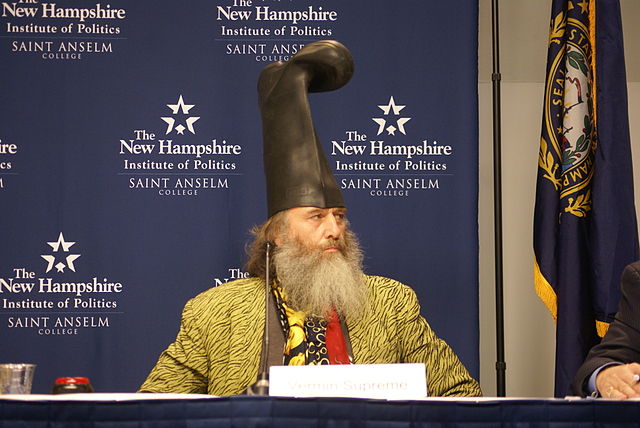
Performance artist and activist Vermin Supreme tends to stand out from the crowd—and that’s without the megaphone. In recent years, he’s been part of the Occupy protests of 2012, as well as asking John Kerry supporters where their candidate stood on “mandatory tooth brushing,” before demanding to know if he was “soft on plaque?” But Vermin isn’t just ribbing Presidential candidates—he’s standing as one himself…kind of. His preferred title would actually be: “Tyrant; Mayor of the United States; Emperor of the New Millennium.”
Always hanging around protest rallies, Vermin Supreme gees up the crowd with his mischievous megaphone chants—he’ll often boycott a call for “Peace!” with a call for “A pony!” The name is real as well—Vermin Love Supreme became his legal moniker in 1986, while he was working as a booking agent for grunge bands. His political career may have been confined to the periphery, but Vermin did have his moment in the limelight when he ran for Mayor of Baltimore. He lost, but if you ever pass a protest rally, be sure to keep a lookout for an activist wearing a boot on his head, doing his best to ruffle some feathers.
8Pogo For President
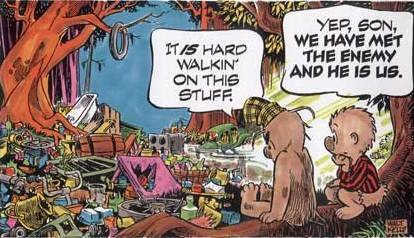
Disney artist Walt Kelley was a bit of an eccentric character, fond of proclaiming “We have met the enemy and he is us!” But his standout stunt, albeit by accident, came about during his day job—drawing “Pogo Possum” for Publishers-Hall Syndicate newspapers. In one particular strip, Kelley decided to have Pogo run for office. Several of the syndicate’s newspapers even went so far as printing special “Pogo for President” badges. But it was no big deal, the whole thing was just a joke—nothing was going to come of it. Right?
Well strangely, the idea caught on. Pogo was read out each morning on Barry Nesbit’s Toronto radio show and Pogo started to garner a following, particularly amongst high school kids in the city. Nesbit even wrote a campaign song especially for Pogo. But it wasn’t just Canada that had the Pogo bug. As far down as Texas, people were sporting badges of Pogo on their lapels. But the problem was easy to spot. Yes, “Pogo for President” had taken off, but Kelley had never actually said what Pogo was going to be president of. As such, the campaign sadly ground to a halt.
7John “Hugo N. Frye” Patric
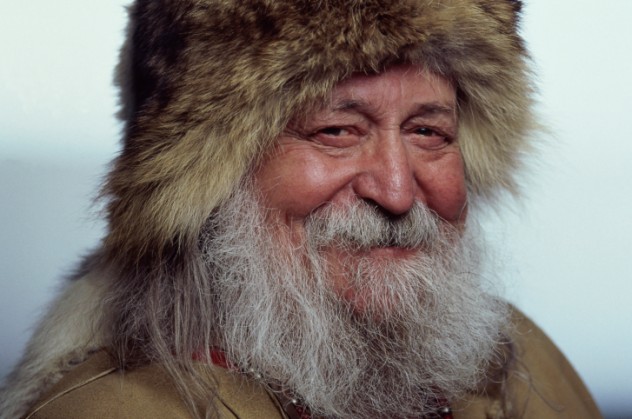
What kind of man goes from being a National Geographic writer in his youth, to hobo during the Great Depression? And not just any hobo. A hobo who upped sticks and moved to Japan, China, and Korea, claiming to have lived off just $200 over two years. John Patric was that kind of man.
Upon his return to the US, Patric decided to hang up his journalist boots and take on the crooked local government in his hometown of Snohomish, Washington. Now known as John “Hugo ‘n’ Frye” Patric (say it out loud for the full effect), Patric published a newsletter called The Snohomish Free Press denouncing local corruption. But in 1959, after just nine issues, Patric’s home was raided by the authorities, who smashed up his typewriter. Patric himself was arrested, placed into a mental home, and booked to appear before the Washington Superior Court. Luckily, the jury threw out the case and Patric was allowed his “right to be strange.” Several years later, Patric ran for Washington State Governor. Sadly, his bid failed. Shame, an Orient-traveling, hobo pamphleteer might have had much to teach the world of politics.
6Gracie Allen
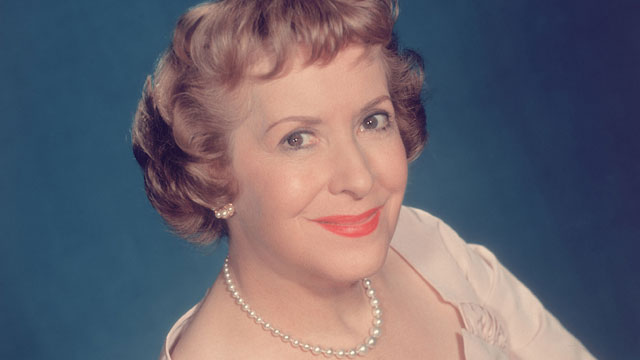
Comedian Gracie Allen was the first of many 20th century women to run for President—she would be followed by slightly more serious candidates from Shirley Chisholm to Hillary Clinton. Allen, you may have guessed, wasn’t that committed to her political career, having come up with the idea to run during a brainstorming session for her radio show.
Not that you would have known it from looking at her campaign. The radio star launched her spoof candidacy in Los Angeles, before traveling to Omaha. Along the way she greeted crowds of some 300,000 fans. At one stage she was even invited to a convention by none other than First Lady Eleanor Roosevelt. Despite the campaign being fictional from the off, Allen’s candidacy was endorsed by Harvard students, she became Mayor of Menominee, Minnesota, and when the actual election took place in November 1940, she garnered several thousand write-in votes.
5Pat Paulsen
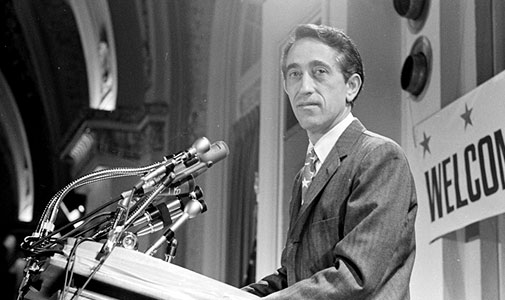
The Pat Paulsen for President campaign was one of many late ’60s satirical protests against the Vietnam war. Partly quoting Roosevelt, Paulsen said: “We have nothing to fear but fear itself…and the bogeyman!” Comedian Pat Paulsen launched his campaign by recording the eponymous album in 1968. The album was subtitled: “Politics is a dirty business. This is a dirty record.”
Paulsen’s dry humor was evident throughout, but his words regarding conscription in “Soldier’s Lament” perhaps encapsulate his ironic political stance: “We hear that it is unfair, immoral, discourages young men from studying, and ruins their careers and their lives. Picky, picky, picky.” Although Paulsen’s satirical campaign never rose beyond that of the purely fictional, the album reached number 71 in the charts, proving the comic had touched a national nerve.
4Pigasus The Immortal
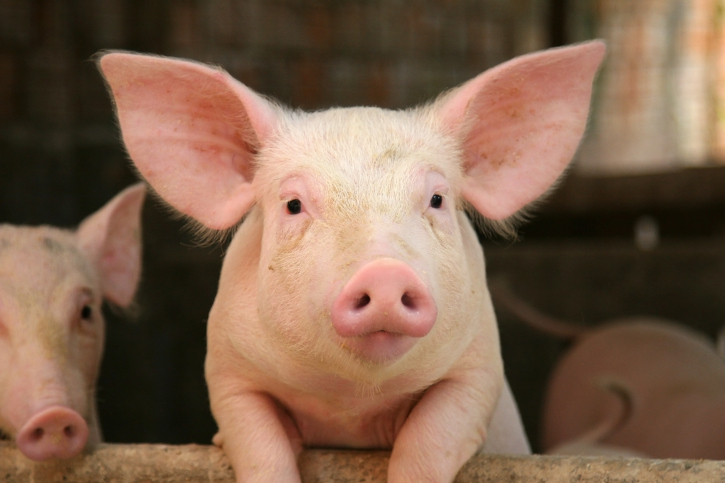
Abbie Hoffman and Jerry Rubin must have loved a sausage sandwich. In 1968, while visiting the Democratic National Convention in Chicago, the founders of the Youth International Party decided to nominate a pig for President. The convention was marked by political turmoil, four years into the Vietnam war there was rioting in the streets and constant protests for 12 days. During this time, the pig—bought from a local farmer for 20 bucks—acted as a kind of mascot for the American people’s dissatisfaction. Pigasus the Immortal became the center of a genuine movement—which was then shut down almost immediately.
During their first press conference, Hoffman and co were arrested for conspiring to incite violence. The whereabouts of Pigasus remain unknown. But this wasn’t Hoffman’s only act of defiance against the American government. In 1967, he had attempted to “exorcise the Pentagon” by enlisting the help of 50,000 protestors to circle the building and levitate the structure with “spiritual vibrations.”
3Samuel Ferdinand-Lop
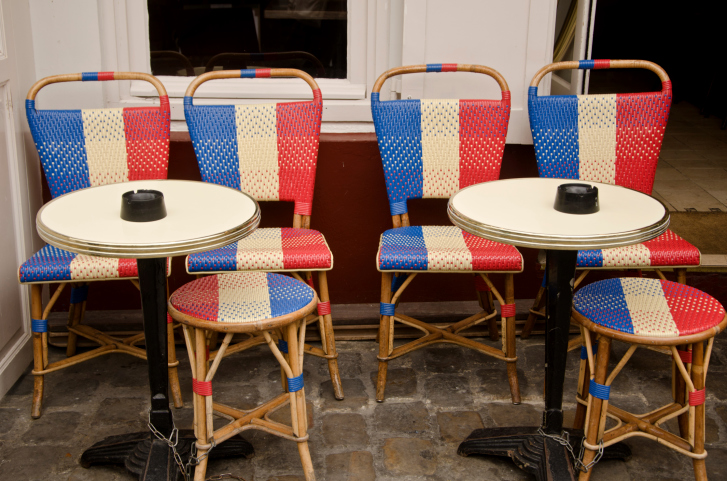
“Vote for Lop and have cleaner Parisian air!” Such was the proposal by satirical candidate Samuel Ferdinand-Lop in the 1946 French election. But how would Lop make the air of an entire city cleaner? By moving every apartment block, museum, and shop to the countryside of course. Whether it was his sense of humor or his reputation as a highly intellectual teacher, painter, and poet, Lop garnered a huge student following, centered around a Latin Quarter café soon nicknamed the “Lopodrome.”
The Lopologists, including a Minister of Tobacco and Health and a Minister of Folklore and Sex, had a strict manifesto, or Lopeothera. They called for a 10pm watershed on poverty, nationalization of brothels to enable the reduction of taxes, and government compensation for “deceived husbands” (they also wanted a new government decoration known as the Order of the Cuckold). Lop may not have got into power, but the man with the pencil-mustache had a bit of the hero about him—during the occupation of Paris by the Nazis he frequently spoke out against their presence. That alone is worth a bit of a chant…”Lop, Lop, Lop, Lop, Lop!”
2Superbarrio
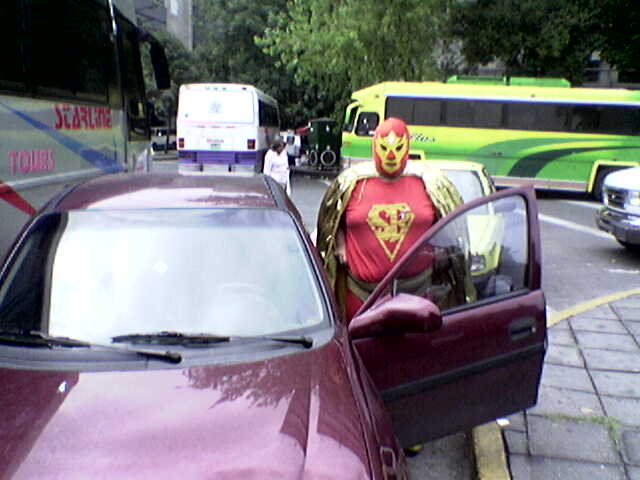
Superbarrio Gomez was more than a man in spandex. He was a proper, real-life superhero. The legend goes that in June 1987, the man behind the mask overheard a housewife plead for Superman to save her fellow residents from being evicted. Pulling on the costume, Superbarrio was born—turning up at evictions and stopping people from being put out on the street. The true story is less romantic, but just as remarkable. During a meeting of the Asamblea de Barrios housing organisation, a woman raised the issue of her impending eviction and declared that the impoverished of Mexico needed someone to defend them. The Asamblea collectively agreed that a symbol against eviction was needed—Superbarrio Gomez.
After numerous court appearances, Superbarrio helped some 1500 people stave off eviction and stay in their homes—using the housing knowledge the Asamblea had behind the scenes, as well as the crowd-pleasing presence of Superbarrio, to pressure the state and local courts. In short, Superbarrio had become a symbol to help the Mexican people. At one stage he was in such demand that there were at least three people wearing the mask. After the success of their housing campaign, the Asamblea disbanded and many of its members went into local or national government—one of those men was the first person to act as Superbarrio.
1Nobody For President

Nobody can deny that, come election time, many of us feel the pinch of apathy—we just don’t care. After all, what’s the point? Politicians don’t stick to their manifestos and nothing ever gets changed. But you could say the oceans of apathetic non-voters are actually voting—for Nobody.
These are thoughts echoed by Wavy Gravy (real name Hugh Romney). Mr Gravy has an eclectic personal history—he got his nickname from BB King, was a close friend of beatnik Ken Kesey, and a member of the Merry Pranksters. At Woodstock, he was the leader of the Please Force, who opened a “freak out” tent to calm down people on bad acid trips. Later in life he opened the Winnarainbow Summer Camp for kids and Ben and Jerry’s once even named an ice cream after him. Gravy ice cream…yum?
However, Wavy Gravy is best known for coming up with the Nobody for President campaign. In December 1975, after realizing that much of the electorate weren’t voting for anyone, a candidate called Mr. Nobody ran for President. A candidate parade was arranged—a car was driven through Berkeley but nobody was sat on the back seat. The Nobody for President campaign is still going to this day, with the aim of having a “None of the Above” box added to ballots. Their campaign continues at nobodyforpresident.org.

